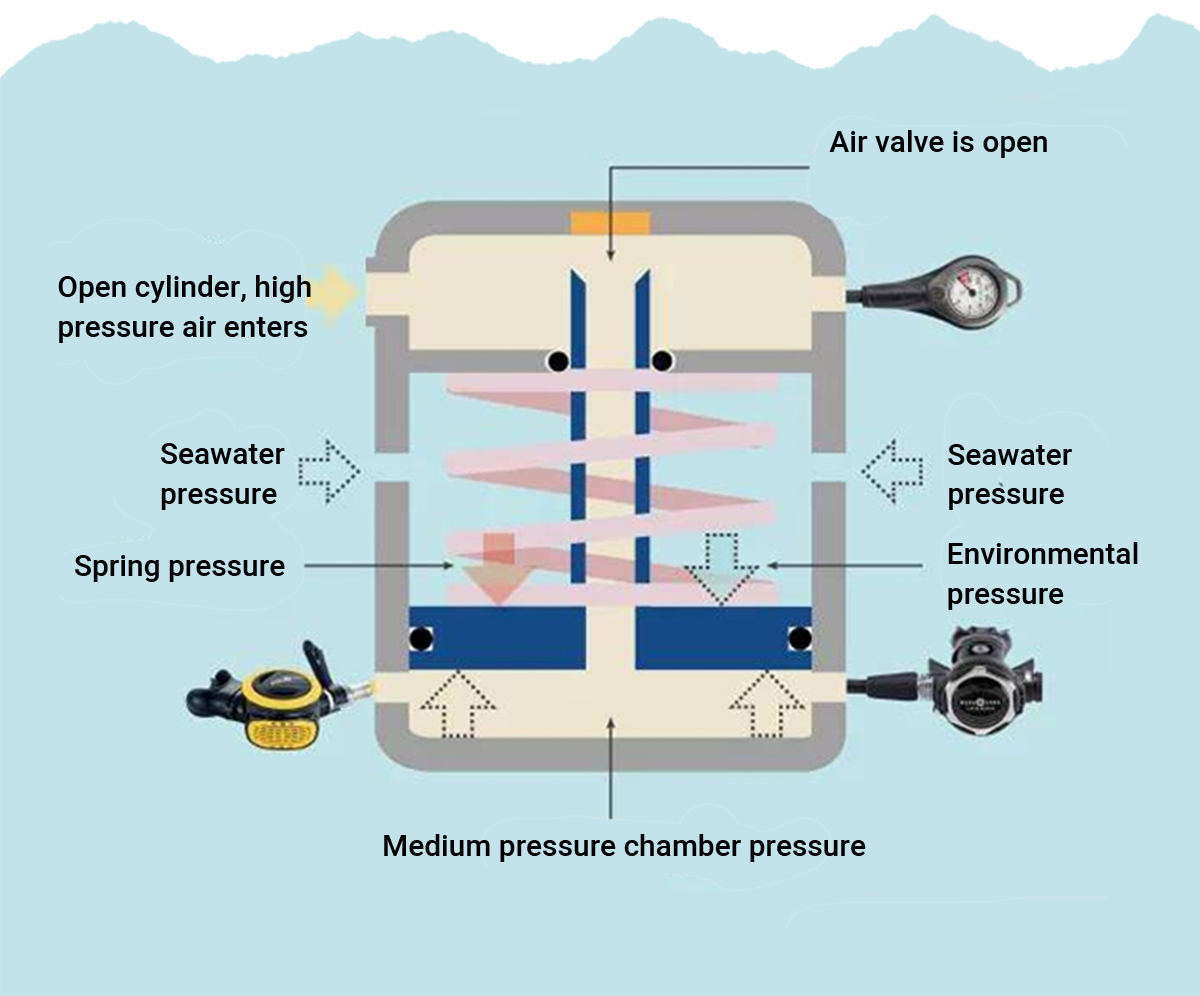The diver's ability to perform normal activities underwater depends on being able to inhale enough oxygen and expel metabolically produced carbon dioxide. Increased gas density and respirator resistance are the two main factors that weakening ability. Even in pressurized chamber, the increased density of gas can cause shortness of breath in divers without the use of a respirator. When divers performing heavy activities underwater will experience significant breathing resistance if breathing air at a depth of around 40m; if they breathe helium-oxygen mixture, they will have difficulty breathing in the range of 260-300m. If the diving depth increases (480m ~ 550m), breathing difficulties will also occur in a resting state.
1. Reasons for increased breathing resistance
Airflow resistance and static lung load are the two main factors limiting breathing in underwater breathing apparatus. Gas flow resistance is caused by the flow of dense gas through the diving gear's tube valves. As the gas density increases, more power is required to maintain the gas flow rate and the diver must generate more negative pressure to inhale and more positive pressure to exhale. As the intensity of activity increases, ventilation is enhanced and greater respiratory power is required. Due to the limited respiratory power provided by the respiratory muscles, at a certain point it is not possible to further increase ventilation. At this point, not all of the carbon dioxide produced by metabolism can be removed, causing hypercapnia.

Static lung load is the difference between the air supply pressure and the static pressure around the lungs, which is more obvious when using semi-closed and closed rebreathers. For example, when swimming horizontally with a rebreather, the diaphragm of the rebreather is located shallowly on the diver's back and the pressure out of the regulator is lower than the pressure in the diver's mouth, so the diver feels a negative pressure in his mouth and it is easier to exhale than to inhale. If the diver's back is down and the diaphragm is located deeper than the lungs, the diver feels positive pressure in the mouth and inhales easier than exhales. In the case of high activity intensity, the static lung load that is too high or too low can cause dyspnea, but it will not increase the level of carbon dioxide in the blood.
2. Preventing breathing difficulties
Reducing airflow resistance and static lung loads on rebreathers is something that diving rebreather developers and manufacturers have always strived to do. However, all underwater rebreathers have limitations and divers must gain enough experience to understand these characteristics. Whether it is the limitations of the rig or of the diver's own respiratory system, they can eventually cause hypercapnia or dyspnoea without an increase in carbon dioxide levels.

Most divers will reduce the intensity of their activities when dyspnoea is detected. However, sometimes, due to the depth of the dive or the performance of the rebreather, dyspnoea can persist for some time after activity has ceased. In this case, inexperienced divers panic and start hyperventilating (breathing too fast), which in turn worsens the dyspnoea and quickly develops into uncontrollable hyperventilation and dyspnoea. At this point, even inhaling a small amount of water can cause laryngospasm, followed by asphyxiation or even drowning.
The correct approach to managing dyspnoea is to stop the activity, ventilate the respirator if possible, or even take respiratory control until the dyspnoea subsides. Depending on the respiratory control, further measures are taken. Usually, the only prominent after effect of increased breathing resistance during diving is respiratory muscle soreness.